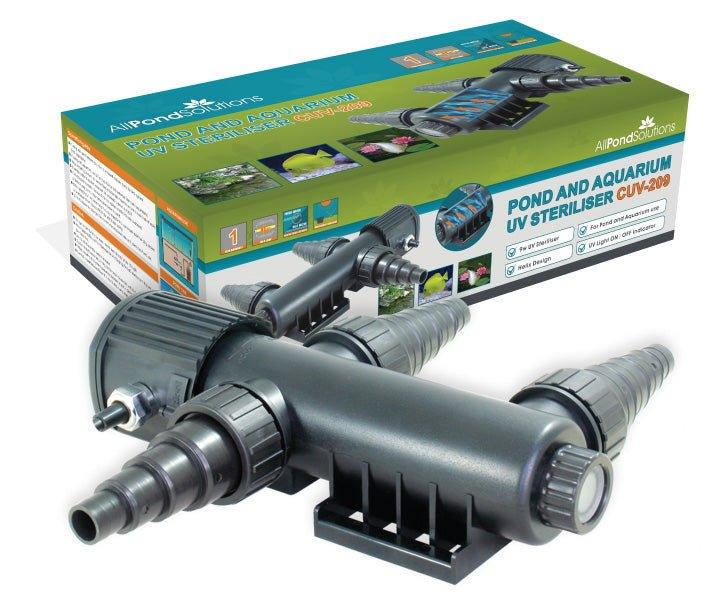Creating the Best Planted Aquarium
We have all seen pictures of exquisite planted fish tanks and probably wondered how on earth does it look so perfect? While it does take a lot of work and a creative eye, we have some tips that you can follow to achieve a healthy planted aquarium that looks pinterest-worthy!
Tank
The first thing you will need before you begin your journey in aquascaping is a great tank. You will want super clear low iron aquarium glass so that no attention is drawn away from your plants. The AllPondSolutions Ultra Clear glass aquariums are the perfect example of colourless white glass tanks that are rimless, braceless and will not interrupt any views of the features inside.
Substrate
Once you have a tank, you will need a good, high-quality substrate to cover the bottom of your tank. Just like plants in your garden need good soil, your live aquarium plants need a nutritious substrate to encourage the healthiest growth. Your substrate will be the basis of a healthy well-running planted aquarium tank. There are so many different substrates that add different elements to your water that, in turn, will help with plants that have various growth requirements. This is why if you plan on keeping plants with advanced care levels, it is important to do your research. Many aquatic plants though are quite hardy and can withstand mostly any environment.
When considering the size and amount of planted tank substrate to add, you should generally stick to small/medium sized substrate pellet sizes and fill your tank just enough to anchor down your plants. Larger substrate will not be as pleasing to look at and filling your tank too much can lead to a build-up of toxic (and smelly) substances like hydrogen sulphide. Plus, it takes up space that could be used by plants, rocks and wood! On the other hand, too little substrate will not hold down your plants.
Tip: Making a slight upward slope towards the back of the tank will give the illusion of greater depth.
Rock & Wood
Large pieces of driftwood or sizable rock can add a beautiful element to your aquascape when placed correctly. Turns out, more goes into placement of these objects than you may think. Creating a planted tank can be considered an art form, and with all art, you ultimately have creative freedom. Though if you have a specific ‘look’ in mind for how you want your tank to appear, there are some golden rules you can follow. For example, have you heard of the rule of thirds?
Picture your tank split into 9 equal pieces with 2 horizontal lines and 2 vertical lines (see image above). Where the lines meet (the four corners of the middle square), this is where your main focal points will be. This is where a lot of people place their ‘stand-out’ features like rocks, aquarium wood pieces and more colourful plants. When placing these features in your planted aquarium you want to make sure they look as natural as possible!
Live Aquatic Plants
When shopping for live aquarium plants you will find that they are usually put into categories such as carpeting plants, mid-ground plants and background plants. This will help you determine placement of the plant in the tank. While it may be obvious, background plants are going to grow the tallest, mid-ground plants will be of medium height and foreground/carpeting plants will be quite short. By placing taller plants in the rear of the aquarium you create a look of greater depth and it is more aesthetically pleasing.
When considering what plants to buy, there are a few things to keep in mind. How do you want your tank to look? Are you going for a minimalist design or a super-green Dutch style tank? Whichever way you want your planted aquascape to look; all the plants should have similar water requirements. Pick plants that need the same water pH, hardness and temperature range so that they will all flourish.
Our aquarium plant section has a variety of different mid-ground and background plants that are perfect for achieving a stunning aquascape and are great for beginners.
When you are setting up a new planted aquarium tank, as your aquarium’s biological system is not yet fully established, it is advisable to choose more robust, resilient plants. Plants that are hardier will also be more resistant to algae growth, which is typically more prevalent in an aquarium that has recently been set up. More delicate aquatic plants can be added after an initial four to six week settling in period when the tank’s ecosystem is more established.
If you are looking to buy hardy aquarium plants some of the best choices are:
 Vallisneri spiralis
Vallisneri spiralis
 Echinodorus bleherii
Echinodorus bleherii
 Anubias nana
Anubias nana
 Echinodorus paniculatus
Echinodorus paniculatus
